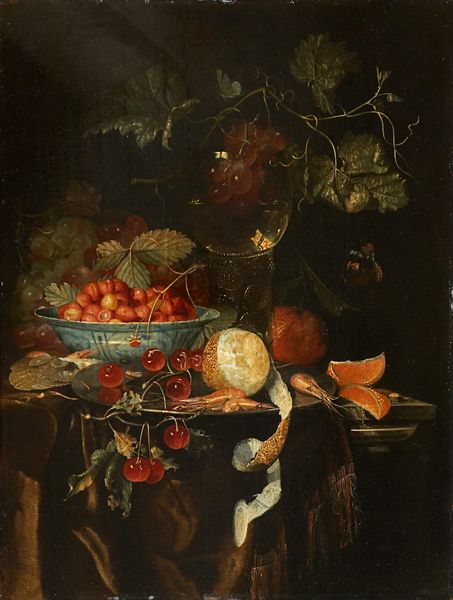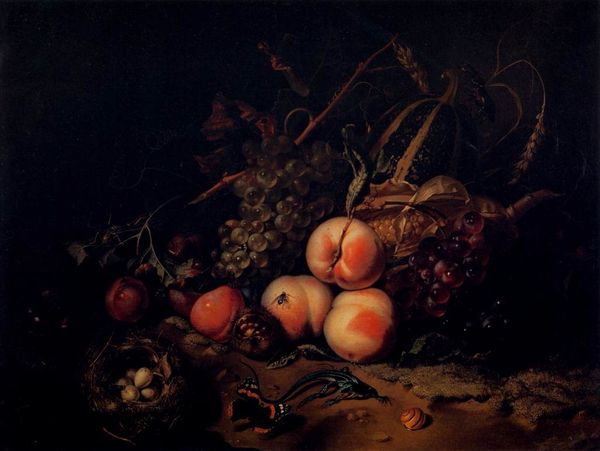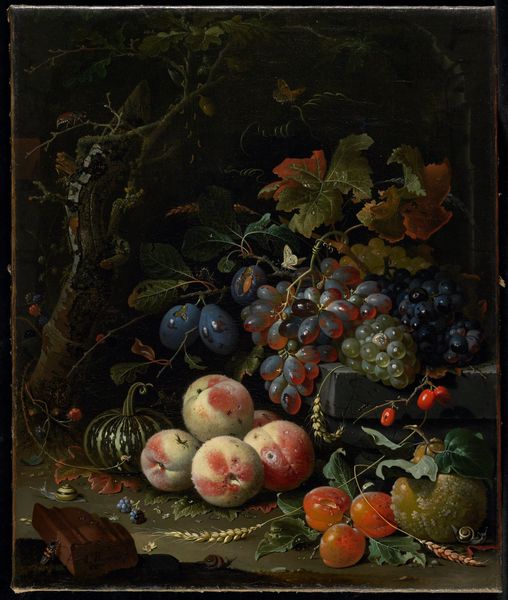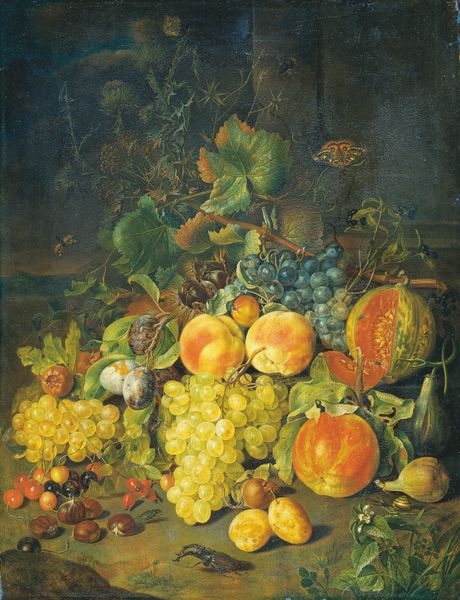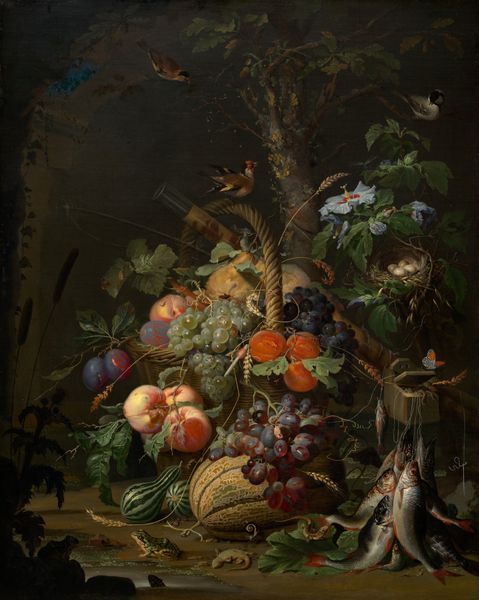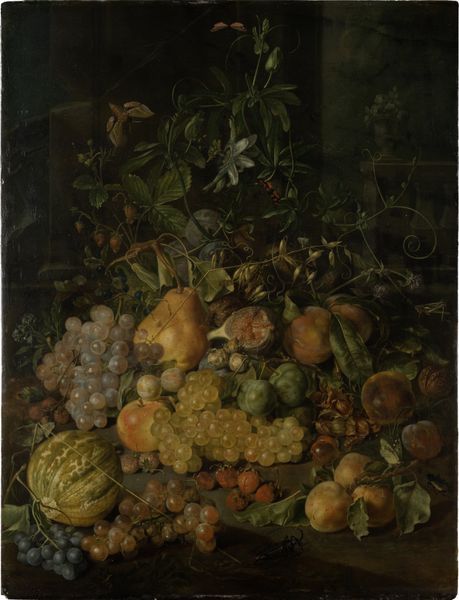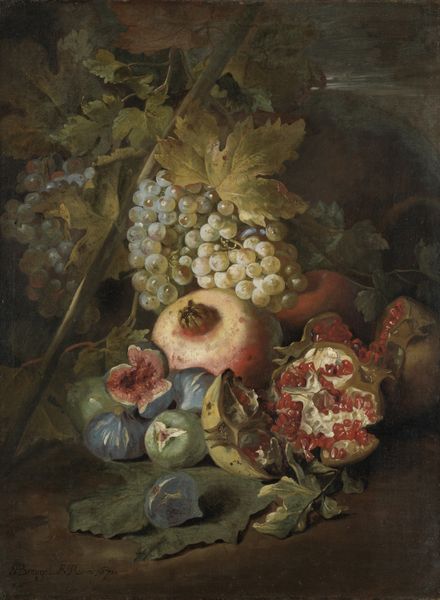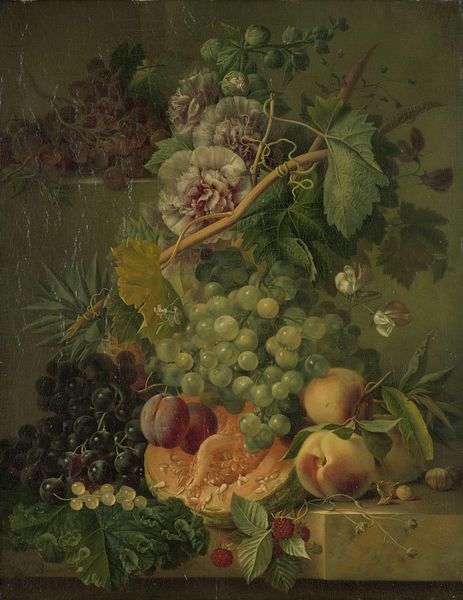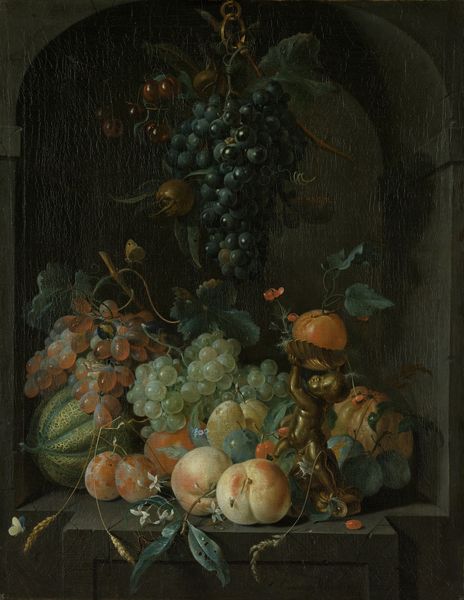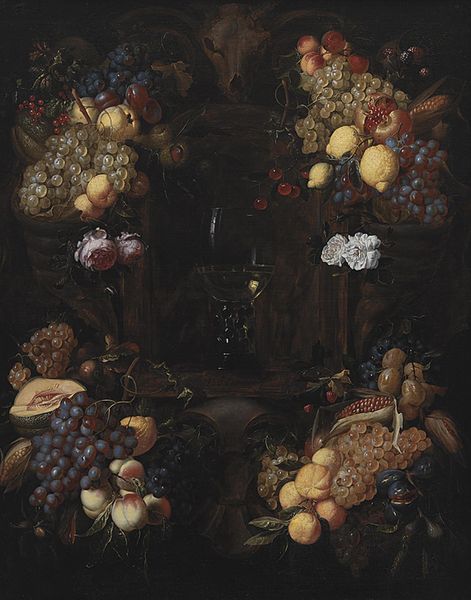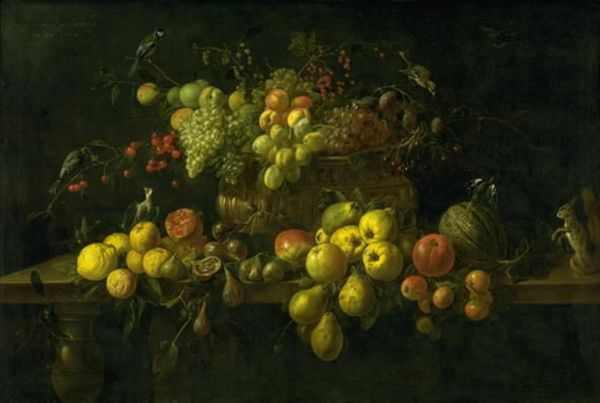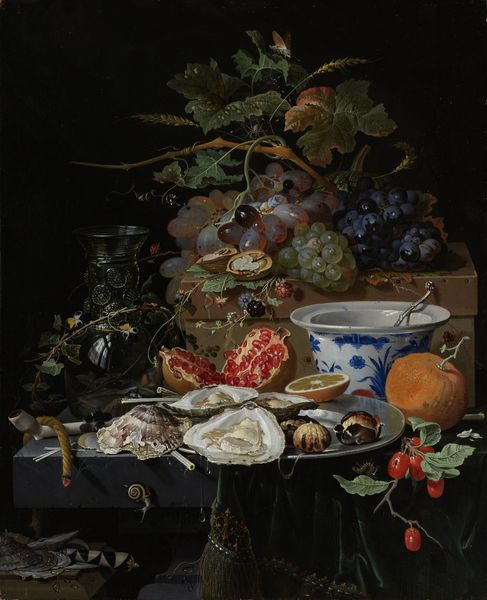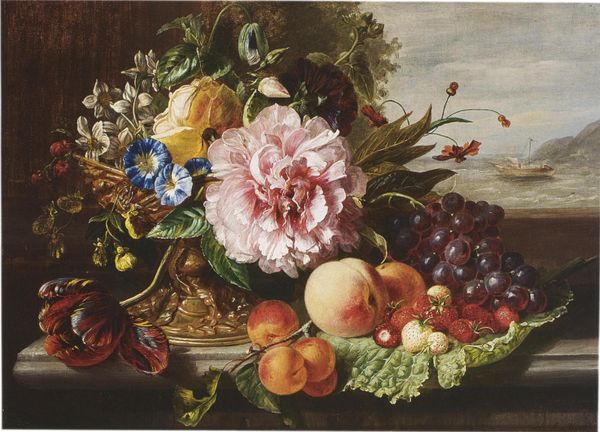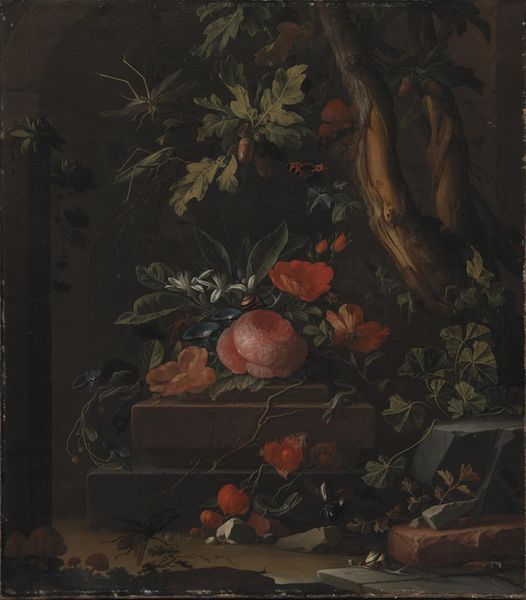
painting, oil-paint
#
baroque
#
painting
#
oil-paint
#
landscape
#
vanitas
#
realism
Copyright: Public domain
Curator: What a feast for the eyes. I am struck by the immediate impact of contrasts between dark backgrounds and radiant foreground elements. Editor: Indeed. Today, we are looking at “Still Life with Fruit, a Nest and a Lizard,” an oil painting from 1710 by Rachel Ruysch. Ruysch, a Dutch artist, became quite renowned during her lifetime for these elaborate still lifes. It's a striking example of Baroque sensibilities. Curator: Baroque certainly, you can really feel its ethos within its deep visual textures and meticulously crafted forms. The cascading arrangement, bursting with a vibrant assortment of fruits and the delicate positioning of the nest contribute to the dynamic compositional unity. How do you interpret the work, especially considering its period context? Editor: It’s hard to miss the clear visual markers alluding to vanitas themes so prevalent in Dutch painting of that time, referencing mortality, time and change. Ruysch constructs an argument through iconography and this highly cultivated assembly of organic material, reflecting larger issues in Dutch society. Curator: Quite right. Notice the detail in the reptile slithering among the shells and rotting fruit near the nest. All life has to follow the same path toward death; here, the artist sets a contemplative space for exactly this awareness. It invites reflection upon life’s ephemeral nature, framed, quite explicitly, by socio-political undercurrents of Ruysch's era. What is particularly striking for you? Editor: I'm particularly interested in the way she captures texture. Observe the contrast between the fuzziness of the peaches and the slick surface of the plums. The precision creates almost tangible dimensionality. How might audiences at the time reacted, coming from such a deeply Calvinist-influenced environment? Curator: Ruysch had a remarkable skill, didn’t she? In such contexts these vanitas themes probably inspired thoughtful moral meditations or possibly reinforced beliefs on simple, pious lifestyles and personal conduct, steering audiences away from worldly excesses. Editor: Agreed, Rachel Ruysch paints a complex and gorgeous composition, doesn't she, capturing both sensory enjoyment and moral gravity. Curator: It leaves you with a certain sense of reflection on the nature of art and its continuing significance over the years.
Comments
No comments
Be the first to comment and join the conversation on the ultimate creative platform.
